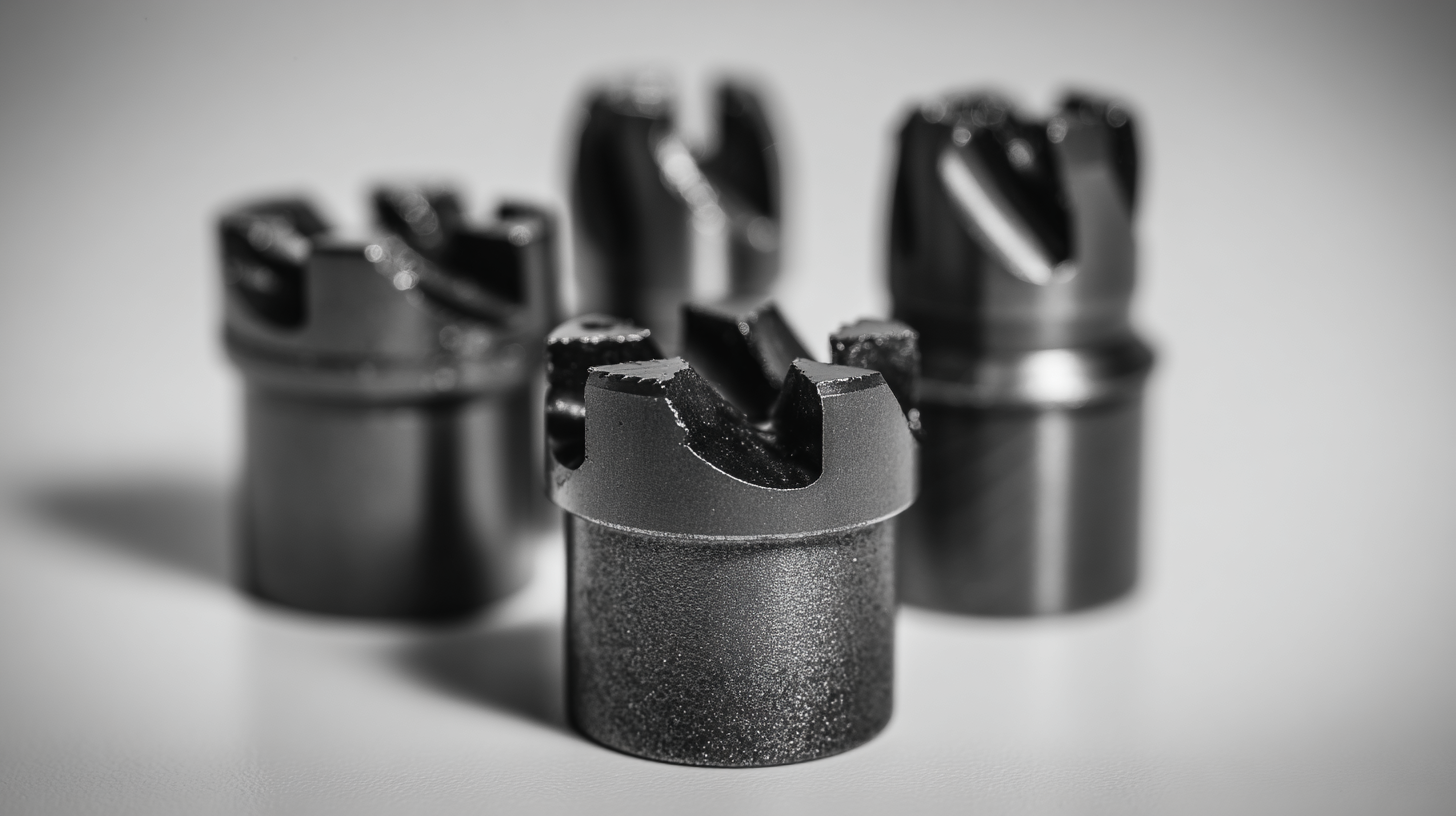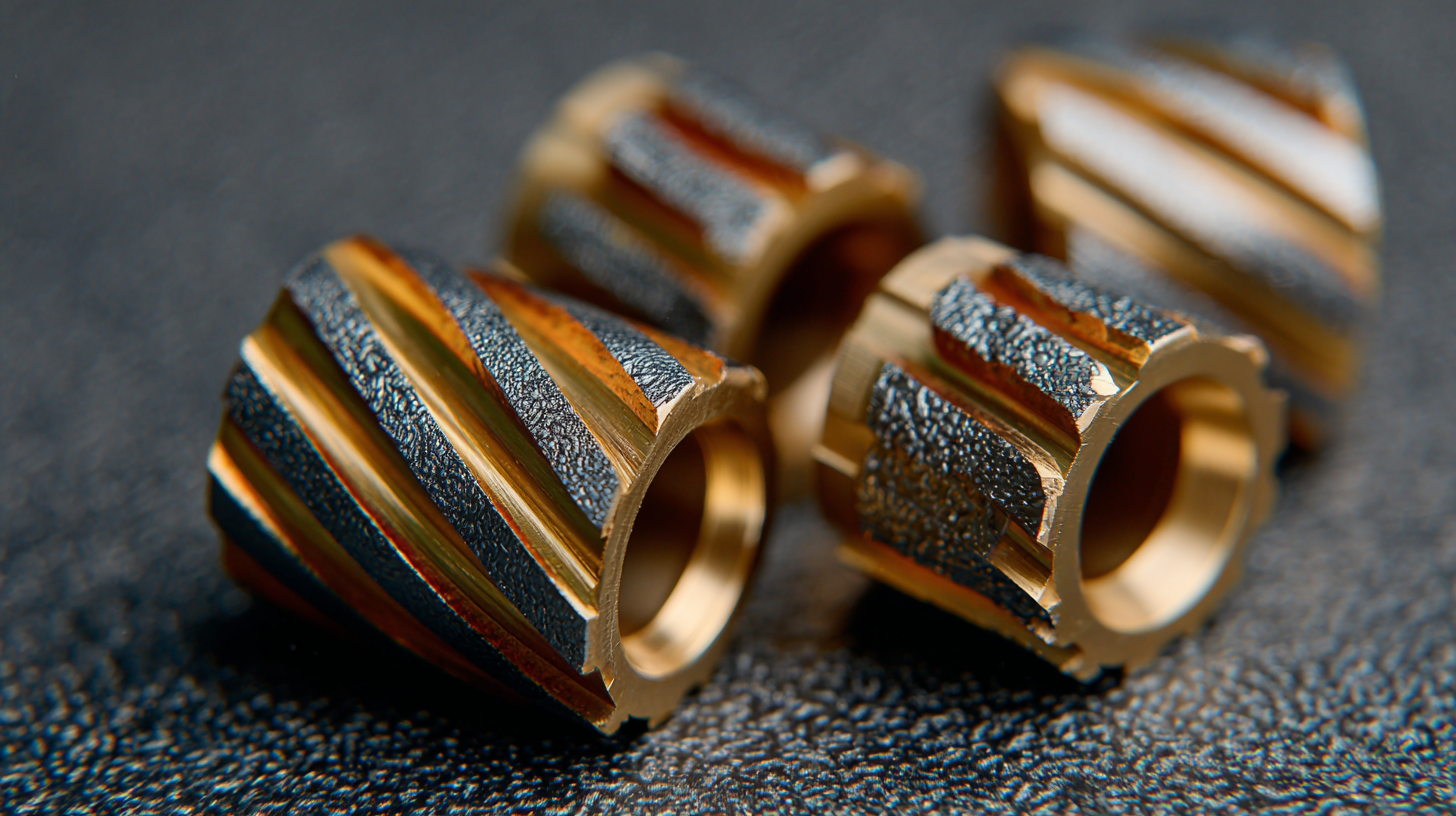Leave your message now to get your free sample and discount price
Leave your message now to get your free sample and discount price
In the rapidly evolving world of manufacturing, the performance and efficiency of machining processes are increasingly dependent on the tools utilized, with Cemented Carbide Inserts at the forefront of this transformation. According to a recent report by Market Research Future, the global cemented carbide tools market is projected to grow significantly, driven by the rising demand for precision machining across various industries, including automotive and aerospace. Cemented Carbide Inserts, known for their exceptional hardness and wear resistance, are pivotal in enhancing productivity and achieving optimal surface quality in materials ranging from metals to composites. As manufacturers continue to seek ways to improve operational efficiencies, understanding the comparative advantages and applications of the leading Cemented Carbide Inserts becomes essential for maximizing performance in machining operations. This blog aims to provide a comprehensive comparison of the top options available, focusing on their characteristics, applications, and the future of these critical components in manufacturing processes.

Cemented carbide inserts have become integral to modern machining processes, largely due to their remarkable wear and corrosion resistance. According to industry reports, the global cemented carbide market is projected to reach approximately $30 billion by 2025, driven by increasing demand across various sectors, including automotive and aerospace. The key features that enhance machining efficiency include high hardness, heat resistance, and the ability to withstand high mechanical stresses without fracturing.
The leading cemented carbide inserts typically feature advanced coating technologies that improve tool life and performance. For instance, inserts with titanium aluminum nitride (TiAlN) coatings can increase resistance to oxidation and offer superior thermal stability, enabling them to perform efficiently at elevated temperatures. Furthermore, research indicates that specialized geometries in insert design can further optimize chip removal and reduce cutting forces, allowing manufacturers to achieve tighter tolerances and better surface finishes. This combination of durability and cutting-edge design makes cemented carbide inserts a preferred choice for industry professionals aiming to enhance machining efficiency.
When selecting the best cemented carbide inserts for your machining needs, it’s essential to consider various criteria that will affect your performance outcomes. Machinability studies, such as those conducted on 17-4 PH stainless steel with PVD coated tungsten carbide inserts, highlight the impact of coating on tool longevity and workpiece surface quality. Optimizing parameters such as flank wear and surface roughness can directly enhance machining efficiency, ensuring that your selected inserts not only meet your operational requirements but also deliver superior results.

The geometry of insert design also influences performance characteristics. Recent investigations into chip breaker geometries have shown that variations can significantly affect cutting forces and chip shape. By utilizing advanced methodologies such as Taguchi experimental designs combined with AI models, manufacturers can achieve substantial cost savings while refining their selection of cemented carbide inserts. As seen in studies optimizing surface roughness in processes involving EN 24 steel, response surface methodology can lead to precise adjustments in insert choice, ultimately improving manufacturing outcomes and tool life.
In the quest for optimal performance in machining processes, the choice of cutting tools is pivotal. A comparative analysis of various cemented carbide insert brands reveals significant differences in performance, particularly in terms of cutting efficiency and wear resistance. Recent studies have showcased the effectiveness of AlTiCrN-coated inserts in enhancing the lifespan and functionality of tools during operations such as dry turning, particularly with challenging materials like AISI 304 stainless steel. The Taguchi method has been employed to optimize the cutting parameters, yielding notable improvements in machining outcomes.
Another fascinating avenue of exploration is the potential of niobium carbide as a viable alternative to traditional tungsten carbide for turning iron-based materials. This emerging material displays commendable cutting performance and could reshape the landscape of cutting tool technology. Additionally, investigations into the effects of geometry on chip breakers reveal that design choices can directly influence the efficiency of material removal. With advancements in coating technologies and materials, continuous research is essential to uncover the most effective combinations for superior cutting performance and tool longevity.
 Cemented carbide inserts are integral to modern manufacturing processes, prized for their durability and cutting efficiency. In particular, these inserts excel in four key applications: metal cutting, drilling, shaping, and machining of composites. In metal cutting, their hardness withstands high-speed operations, ensuring precision and extending tool life. Manufacturers often rely on these inserts for producing tight tolerances and superior surface finishes, making them ideal for automotive and aerospace components.
Cemented carbide inserts are integral to modern manufacturing processes, prized for their durability and cutting efficiency. In particular, these inserts excel in four key applications: metal cutting, drilling, shaping, and machining of composites. In metal cutting, their hardness withstands high-speed operations, ensuring precision and extending tool life. Manufacturers often rely on these inserts for producing tight tolerances and superior surface finishes, making them ideal for automotive and aerospace components.
Drilling operations also benefit significantly from cemented carbide inserts. Their wear resistance under extreme conditions allows for high penetration rates and reduced downtime. Similarly, in shaping applications, these inserts facilitate intricate designs without compromising on the material's integrity. When it comes to machining composites, the combination of strength and resistance to thermal decomposition gives cemented carbide inserts an edge over other materials, ensuring optimal performance across a variety of challenging manufacturing scenarios.
To prolong the life of cemented carbide inserts, maintenance is crucial. One essential tip is to regularly inspect the inserts for wear and damage. Identifying signs of wear early can prevent further deterioration and ensure optimal machining performance. Additionally, maintaining proper cutting parameters can significantly affect the lifespan of the inserts. Using the recommended speed and feed rates appropriate for the material being machined minimizes stress and heat buildup, which in turn reduces wear.
Another maintenance strategy involves the consideration of advanced treatments. Recent research highlights the impact of cryogenic treatment on tungsten carbide inserts, revealing significant improvements in their performance during machining of alloy steels. By subjecting these inserts to cryogenic processes, manufacturers can enhance their durability and resistance to wear. This insight points to the growing importance of innovative treatments in maintaining carbide inserts and optimizing their longevity in various machining applications. Adopting such practices not only extends the life of inserts but also contributes significantly to overall efficiency in manufacturing processes.
| Insert Type | Coating Type | Hardness (HRA) | Toughness (MPa) | Recommended Cutting Speed (m/min) | Maintenance Tip |
|---|---|---|---|---|---|
| General Purpose | TiN | 92 | 1500 | 100 | Regularly use coolant to prevent overheating. |
| Finishing | TiAlN | 94 | 1200 | 200 | Clean inserts after each use to avoid buildup. |
| Roughing | AlTiN | 90 | 1300 | 80 | Avoid excessive feed rates to minimize wear. |
| High-Performance | ZrN | 96 | 1600 | 150 | Store inserts in a dry place to prevent rust. |
